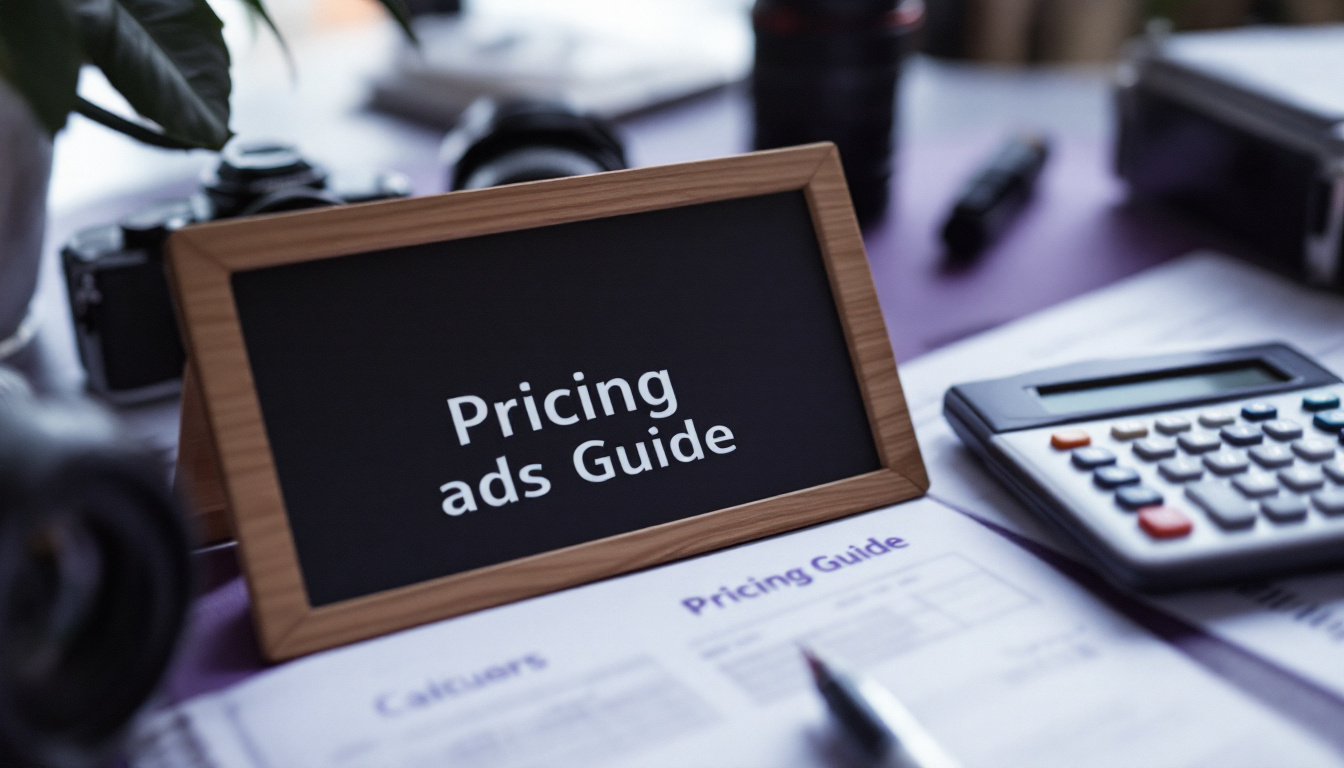Starting your own photography business is an exciting adventure! But as you set up shop, one crucial aspect will come into play: pricing your services. Whether you are an aspiring photographer or a seasoned pro, getting your prices right can make or break your business. In this photography pricing guide, we will explore everything you need to know about pricing to help you confidently set rates that attract clients and reflect the value of your work.
Understanding the Basics of Photography Business Pricing
Before you can set competitive rates, it’s essential to understand the fundamentals of photography pricing. Think of your pricing strategy as the foundation of your photography business. A solid understanding will empower you to create a harmonious balance between your needs and market expectations.

The Importance of Pricing in Your Photography Business
Pricing is more than just a number; it’s a representation of your brand and what you bring to the table. When clients see your prices, they subconsciously make judgments about the quality of your services. Are you a hobbyist or a professional? Does your work warrant a higher investment? Remember, your pricing can communicate confidence and integrity in your skills.
Moreover, pricing can also influence the type of clientele you attract. Higher prices may deter budget-conscious clients but can also attract those looking for premium services and unique artistry. Conversely, lower prices might bring in a larger volume of clients but could lead to perceptions of lower quality. Therefore, it’s crucial to align your pricing with the brand image you wish to project and the clientele you aspire to serve.
Key Factors Influencing Photography Pricing
Several factors influence how you should price your photography services. You’ll want to consider your target market, the type of photography you offer, and your location. Do you specialize in weddings or portraits? The demand for specific styles can significantly impact your rates.
Additionally, consider your costs. From equipment to software subscriptions and marketing, your expenses should play a key role in how you determine your prices. It’s essential to strike a balance between staying competitive while also ensuring you can sustain your business. Furthermore, keep in mind the time you invest in each project, including pre-shoot consultations, the actual shoot, post-processing, and client follow-ups. All these elements contribute to the overall value you provide, and they should be factored into your pricing structure.
Another important aspect to consider is the local market dynamics. Research what other photographers in your area are charging for similar services. This can provide valuable insights into pricing trends and help you position yourself effectively. Additionally, consider the economic climate—during times of economic downturn, clients may be more price-sensitive, while in a booming economy, they may be willing to invest more in quality photography. Understanding these nuances will allow you to adapt your pricing strategy accordingly and maintain a competitive edge.
Setting Your Base Price: Where to Start
Now that you have an understanding of the basics, it’s time to set your base price. This is often the hardest part, but once you get started, you’ll find it becomes easier with practice.

Calculating Your Cost of Doing Business
Your cost of doing business (CODB) includes all your expenses, both fixed and variable. This means everything from studio rent, insurance, equipment investment, and even your internet bills when you’re working on your online portfolio.
To calculate your CODB accurately, you might use a simple formula that tallies up these costs over a year, then divides by the number of client bookings you expect. This gives you a clearer picture of how much you need to charge just to break even. Additionally, consider setting aside a percentage of your income for unexpected expenses or slow periods. This safety net can provide peace of mind and help you navigate fluctuations in demand without compromising your financial stability.
Evaluating Your Skill Level and Experience
Your skill level and experience are unique to you and should play a significant role in how you price your services. Are you just starting or do you have years of experience under your belt? Consider your portfolio and the results you deliver to clients.
Don’t forget to reflect on client feedback and testimonials! Positive reviews can help justify higher rates. As your experience grows, remember to evaluate your pricing regularly to ensure it aligns with your level of skill. Furthermore, consider any specialized training or certifications you may have acquired; these can significantly enhance your value proposition. Clients are often willing to pay a premium for professionals who have invested in their craft, as it demonstrates a commitment to quality and excellence in service delivery.
Competitive Pricing Strategies for Photography Businesses
Competition is fierce in the photography industry. However, with the right strategies, like from this photography pricing guide, you can set your business apart. Use competitive pricing strategies to become the go-to photographer in your niche.

Pricing According to the Market
Research is key when it comes to photography pricing guide! Check what other photographers in your area are charging. You want to be competitive, but don’t undervalue your work either. If you notice that your rates are significantly lower than those of other professionals, it might be worth considering a revision.
Remember to factor in your experience, style, and the quality of your portfolio. Clients often equate higher prices with superior quality, so don’t hesitate to price yourself accordingly.
Additionally, consider the demographics of your target market. Are you catering to high-end clients who expect luxury services and products? Or are you focusing on budget-conscious customers looking for affordable options? Tailoring your pricing strategy to align with your audience’s expectations can significantly enhance your business’s appeal and profitability.
Value-Based Pricing: What It Is and How It Works
Value-based pricing is where you set your prices based on the perceived value of your service rather than just your costs. This strategy requires you to understand what your clients truly value in your photography business. Is it the quality of the photos? The experience you offer? Or perhaps your artistic style?
By communicating the unique value you bring to the table, you can justify higher prices, making it easier for clients to see why investing in your services is worthwhile. And since you’ve read photography pricing guide, you know how to do that.
Furthermore, consider creating packages that highlight the benefits of your services. For instance, offering a premium package that includes not just the shoot but also a beautifully crafted photo album or a digital gallery can enhance perceived value. This not only elevates your pricing strategy but also provides clients with a tangible sense of the value they are receiving, making them more likely to choose your services over competitors.
Common Pricing Models in the Photography Industry
With various pricing models available in the photography industry, it’s essential to choose the one that suits your business best. Let’s break down a couple of popular options!
Package Pricing Vs. A La Carte Pricing
Package pricing bundles multiple services together at a discounted rate, which can be attractive to clients. It allows you to present a well-structured offering that clients can easily understand. For example, a wedding package could include pre-ceremony, ceremony, and reception coverage. This approach not only simplifies the decision-making process for clients but also encourages them to opt for additional services they might not have considered initially, such as engagement shoots or post-wedding sessions. Furthermore, packages can be tailored to different budgets, enabling photographers to cater to a wider audience.
In contrast, a la carte pricing lets clients select services individually, giving them complete control over what they want. While this model can attract clients who prefer customization, it may also lead to confusion about total costs. Clients might end up spending more than they anticipated if they add multiple services. Additionally, photographers using this model must ensure clear communication about pricing for each service to avoid misunderstandings. It’s crucial to provide a detailed menu of options, including any potential add-ons, to help clients make informed decisions without feeling overwhelmed.
Hourly Rate Vs. Flat Rate Pricing
Hourly rates are straightforward, charging clients based on the time you spend shooting or editing. This can work well for projects with flexible timelines. However, flat rate pricing offers clients a clear understanding of what they’ll pay upfront, eliminating surprises. This can build trust and help the client feel secure in their investment. Moreover, flat rate pricing can be particularly beneficial for larger projects, such as commercial shoots or extensive event coverage, where the scope of work is well-defined. Clients appreciate knowing exactly what they’re paying for, which can lead to higher satisfaction and repeat business.
On the other hand, as part of photography pricing guide, hourly rates can sometimes lead to a more dynamic working relationship, as clients may feel they are paying for your time and effort rather than a predetermined package. This can encourage photographers to be more efficient and creative with their time, potentially resulting in unique and spontaneous shots that might not occur in a more structured environment. However, it’s essential to set clear expectations regarding the estimated hours required for a project to avoid any potential disputes over billing at the end of the shoot.
Adjusting Your Prices: When and How
As your photography business grows, you may find yourself needing to adjust your prices. This can feel daunting, but knowing when and how to do it is essential.
When to Consider Raising Your Prices
Keep an eye on your growth. If you find that you’re consistently booked solid and your services are in high demand, it may be time to consider a price increase. Also, if you’ve invested in new equipment or expanded your skill set through workshops, it’s a sign that your service offerings have improved.
Another occasion to review your rates might be once a year or after a significant change in your services. Regular evaluations keep your business aligned with the market and ensure you’re adequately compensated for your efforts. Additionally, consider the economic climate and how it affects your target audience. If your clientele is experiencing increased disposable income or if there’s a surge in demand for photography services in your area, it could be the perfect opportunity to adjust your pricing strategy accordingly.
Communicating Price Changes to Your Clients
Transparency is key when it comes to the photography pricing guide. When raising your prices, it’s best to inform your existing clients well in advance. Send out an email or newsletter explaining any changes and the reasons behind them. This shows professionalism and respect for your clients’ loyalty.
Offering a current client a limited-time discount or a chance to book at the existing rate before the change shows you appreciate their ongoing support. This thoughtful gesture can enhance your client relationship. Furthermore, consider creating a FAQ section on your website that addresses common concerns about price changes, such as how it may impact existing contracts or upcoming projects. This proactive approach can alleviate any potential anxiety your clients may have and reinforce their trust in your business.
In conclusion, setting competitive prices for your photography business takes time, research, and a willingness to adjust as you grow. Consider utilizing free website builders like Solo AI, which offers a mobile-friendly, SEO-optimized platform that allows you to showcase your portfolio and attract clients easily. With your custom domain, you’ll establish a professional presence that reflects your brand while supporting your pricing strategies. Happy shooting, and may your photography business thrive!
Take Your Photography Business Online with Solo
Now that you’re equipped with the knowledge from photography pricing guide to set competitive rates for your photography business, it’s time to showcase your work to the world. With Solo, creating a stunning, professional website is a breeze. Let AI streamline the process for you, from organizing content to curating initial images, all while optimizing for SEO to increase your visibility. Connect your social media for reviews, link your calendar for bookings, and even get a custom domain for free. Your mobile-responsive site will look amazing on any device, and with tools like Google Analytics, you can monitor your success. Ready to elevate your photography business? Create your photography website with Solo today and focus on capturing those perfect moments while we handle the rest.
Create your website with Solo today and watch your business grow!
